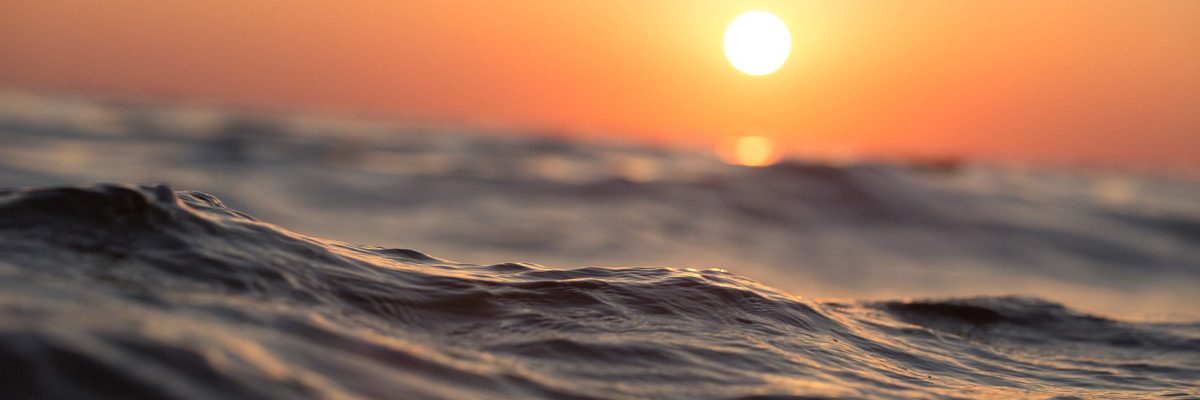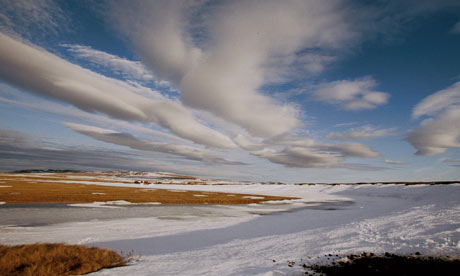Slightly cooler wetter Summers, and slightly warmer and wetter Falls with earlier first frosts. Oh that sounds so scary. But if you think about it, it is. I have said all along that the biggest early effect of Global Warming is the disruption in farming. Farmers won’t know when to plant. They will have replant and they may not be able to harvest…This will mean that we can feed ourselves but we can’t feed the world. Food riots have already happened 2 years ago, thought governments were better prepared last year.
Don’t believe me? Let’s ask the experts.
http://www.isws.illinois.edu/atmos/statecli/ElNino/elnino.htm
El Niño and La Niña in Illinois
El Niño and La Niña refer to periods when sea-surface temperatures along the equator in the Pacific Ocean are either unusually warm (El Niño) or cold (La Niña). These events typically begin in the spring or summer and fade by the following spring. A more complete description of El Niño and La Niña can be found under Other Resources below.
The NOAA Climate Prediction Center has identified a weak El Niño event in the Pacific Ocean. This event is expected to strengthen and last through this winter (2009-2010). Here is a series of maps on the historical impacts of El Niño on monthly temperature and precipitation (pdf). In general, they produced warmer-than-normal temperatures in September and during December-March. In contrast, cooler-than-normal temperatures prevailed in August and April-May. The impact on monthly precipitation was both weaker and less consistent. Somewhat wetter conditions prevailed in August, October, and December while drier conditions were found in September. [posted September 22, 2009]
Summary of Impacts of El Niño
El Niño events vary in size, intensity, and duration. As a result, the impacts can vary from one event to the next. In addition, there may be other factors that influence our weather during these events.
- Summers tend to be slightly cooler and wetter than average
- Falls tend to be wetter and cooler than average
- Winters tend to be warmer and drier
- Springs tend to be drier than average
- Snowfall tends to be 70 to 90 percent of average
- Heating degree days tend to be 80 to 90 percent of average. Lower heating degree days mean lower heating bills.
- Tends to reduce tornado activity in the High Plains and Midwest and increases it in the Sout
:}
He wants to blame it on El Nino, but notice later he says they have been getting weaker and weaker…What happens when they do not come?
:}
http://www.aces.uiuc.edu/news/stories/news4422.html
Farmers Who Plant – Or Replant – After June 20 May See Yields Shrink By Half
Published: Jun. 10, 2008
Source: Emerson Nafziger, 217-333-4424, ednaf@illinois.edu
CHAMPAIGN, Ill. — A costly deadline looms for many growers in the Midwest, as every day of waiting for the weather to cooperate to plant corn and soybeans reduces potential yields. Research indicates that Illinois growers who plant corn or soybeans near the end of June can expect a 50 percent reduction in crop yield, according to a University of Illinois agriculture expert.
The U.S. Department of Agriculture reports that corn and soybean growers in several Midwestern states are behind schedule on their planting. A cooler and wetter-than-average spring has left Illinois and Indiana furthest behind on planted corn and soybeans. Several other states are lagging behind their normal planting schedules, but by a lesser margin.
In Illinois, 95 percent of the corn is planted and 88 percent has emerged, but less than half of that is reported to be in good or excellent condition. Fully 14 percent of the acres planted are in poor or very poor condition, with another 38 percent reported as fair. Those acres in poor or very poor condition may have to be replanted.
In Illinois, the corn was 7 inches high as of June 9, compared to an average of 17 inches by this time in recent years. Illinois crop sciences professor Emerson Nafziger says cool temperatures and the third wettest January-April since 1895 in Illinois have led to delays that are undercutting potential yields.
:}
http://www.agpowermag.com/articles/articles.php?articleid=408
Think Twice Before Tilling Corn Ground This Spring
Thinking of taking a disk or field cultivator to last year’s no-till field? Agronomists warn that just one tillage pass is enough to negate many of the long-term benefits of no-till farming.
“After two to five years of continuous no-till farming, we see significant improvements in soil structure and organic matter levels,” says Jerry Hatfield, a researcher with the USDA-ARS Soil Tilth Lab in Ames, Iowa. No-till ground also resists crusting and has a higher cation exchange capacity, which is the soil’s ability to hold onto nutrients. Tillage — even just one pass – diminishes those benefits.
Once you revert back to tillage, you’re also giving up more immediate benefits like time, labor, and fuel savings, points out Mike Plumer, natural resources educator with the University of Illinois.
Despite these benefits, no-till corn acreage has leveled off nationally and declined in some eastern Corn Belt states, according to the Conservation Technology Information Center. Many blame unseasonably cool and/or wet spring weather. In Iowa, for example, last April was the coldest April since 1983 and the 16th coldest in 125 years of state record keeping. Last May was
the seventh coldest May in 125 years.
Under these conditions, no-till soils start out cooler and can take longer to warm up. That can put a strain on corn emergence and early growth.
If El Nino brings warm, dry weather to the Corn Belt this spring, no-till corn acreage could rebound, says Wayne Pedersen, plant pathologist with the University of Illinois. “No-till systems always do well in dry years,” Pedersen says. “No-till soils hold onto moisture better than tilled soils. As a result, no-till corn can tolerate a lack of rainfall — without yield loss — for a much longer period than conventional till corn.”
:}
I know that is 2008 analysis and comment. but like I said what if it doesn’t go away? hmmmmmm
:}
http://web.extension.illinois.edu/stephenson/news/news17285.html
Spring Forage Seeding Considerations
FOR IMMEDIATE RELEASE
March 15, 2010
| Mother Nature did not allow many graziers to frost seed red clover in late February-early March. Wet conditions have prompted several forage producers to ask about seeding. In the recent Iowa State University Integrated Crop Management News newsletter, Steve Barnhart, Extension forage specialist addressed the topic of “wet spring forage planting considerations”. With some minor modifications for Illinois, the article follows.
Can spring forage stands still successfully be plant? The short answer is – yes, into the first ten days to two weeks of May (late-summer seedings are more successful in southern Illinois). The end of the spring forage planting season is limited by seedling development and growth into the summer months. Most forage seedlings are emerging and growing root systems into the top one to three inches of the seedbed during the three to four weeks following germination. from here on. If conditions turn normal or hotter and dryer than normal, the risk of late planted forage seeding failures increases. If late May and early June conditions remain cooler and wetter than normal, then later-than-desired spring forage seedings may survive very well. cereal companion crop planting rates to half of a full seeding rate or less, and mow or clip new seedings several times during the early seedling development months to allow sunlight to reach small developing legume and grass seedlings. Also scout for and manage potato leafhoppers in new alfalfa seedings. |
:}
More tomorrow…
:}


 Permafrost in Siberia. Methane emissions from the Arctic permafrost increased by 31% from 2003-07, figures show. Photograph: Francis Latreille/Corbis
Permafrost in Siberia. Methane emissions from the Arctic permafrost increased by 31% from 2003-07, figures show. Photograph: Francis Latreille/Corbis




























